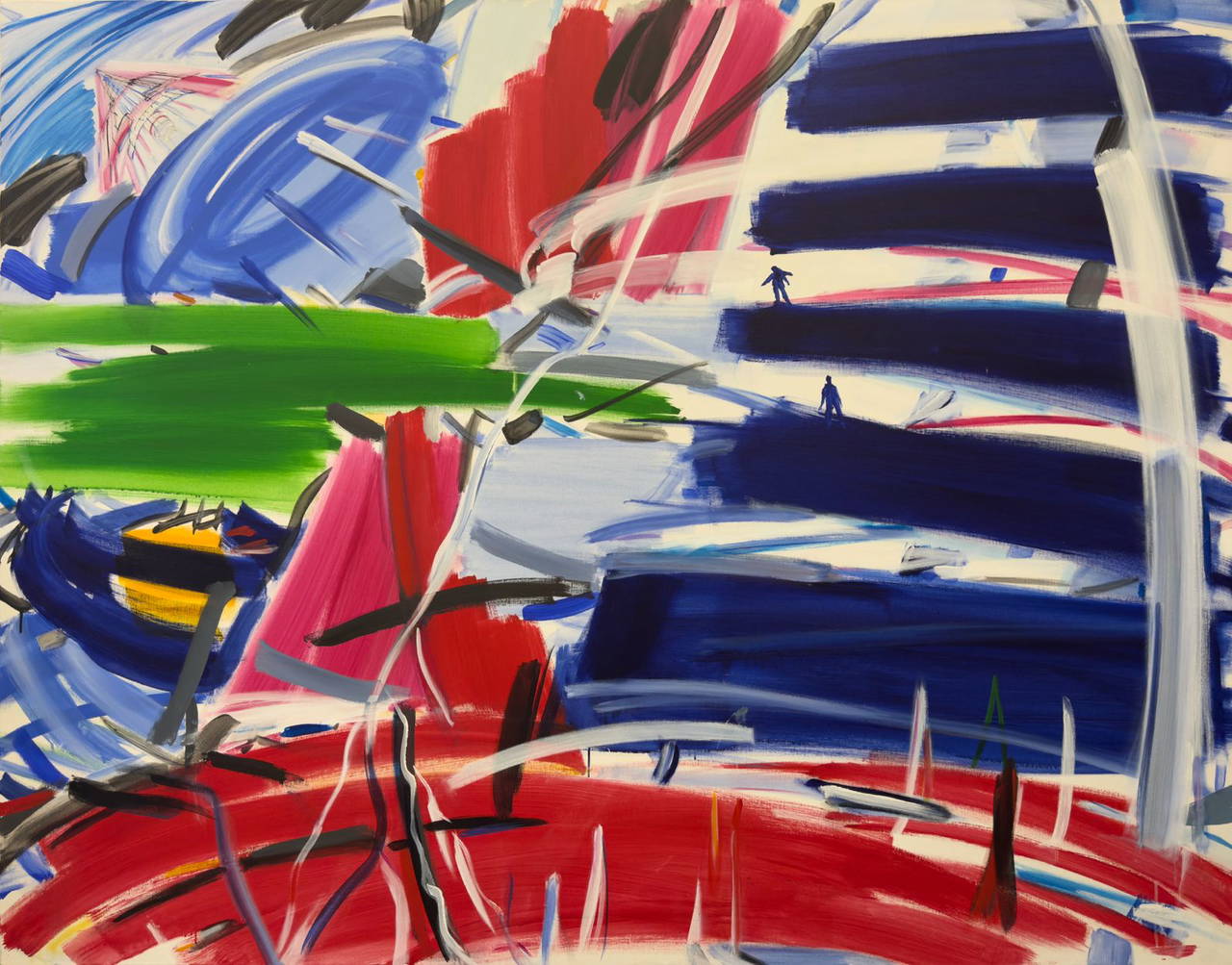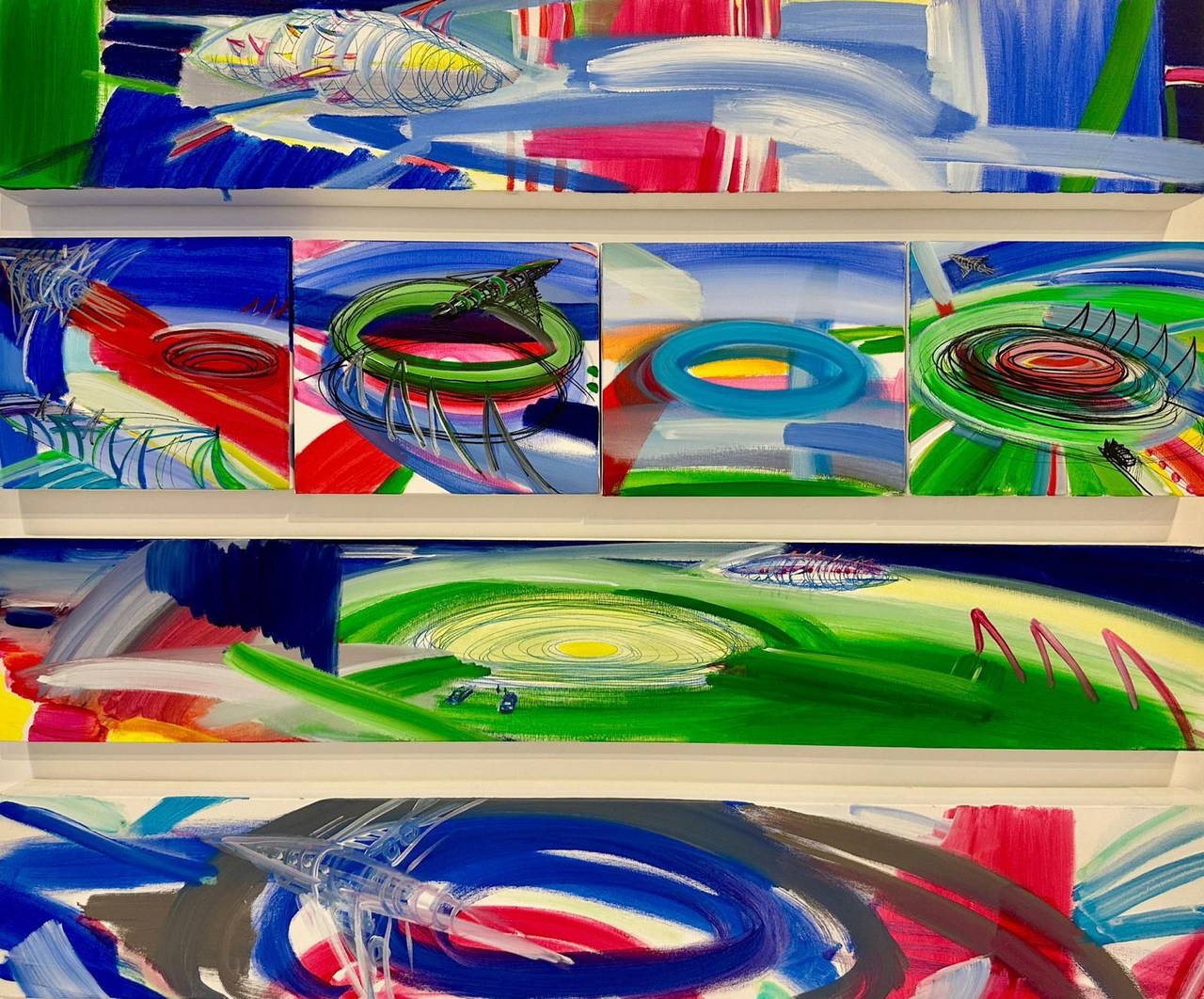On the Threshold of Time at Cermodern: 'The Disappearing Future, Remembered Landscapes' with Şeniz Aksoy

This exhibition, which coincides with Cermodern's 15th anniversary, is not merely an artist's personal adventure; in my view, it's an attempt to re-measure time through painting. The landscape on Şeniz Aksoy's canvases isn't just a passing image; it's a space of memory that draws us in, unfolding layer by layer. That vast expanse brings to mind Etel Adnan's words, "The true space of painting is the space of memory." Aksoy's brush wanders in an interstitial space where nature and technology, the figure and the abstract, speed and anticipation intersect. We, too, stand in that interstitial space: as if recalling a memory before it's experienced; as if hearing a farewell without saying it.
AKSOY'S VIEW: WIND, SPEED AND THE TRACE LEFT BEHINDThe feeling that permeates the entire exhibition is, for me, the state of "becoming" translated into painting. The brushwork suggests a process, not a fixed outcome. Wide sweeps, twisting arcs, abruptly interrupted rhythms… The canvases overlap like geological layers; sometimes a red stripe cuts through everything, sometimes a dark cobalt tone weighs down the horizon. This language invites not only natural phenomena but also the speed of the age into the picture. While we sense the shadow of futurism, Aksoy's aim is not a technical eulogy of speed; it is to establish a pictorial equivalent of our accelerated perception.
I believe what's significant about these paintings is the simultaneous audibility of the gaze viewing the world from above and the breath of a traveler passing through. The white canvas, occasionally left uncovered, acts as a bridge connecting the two paintings, providing clues to the preceding and subsequent scenes. Thus, the "landscape" ceases to be merely a depiction of geography; it becomes a geography of time.
THE INTERSECTION OF EAST AND WESTAksoy approaches the landscape tradition from two perspectives: the East's inward-curving field of thought and the West's outward-expanding perspective converge in these canvases. On one side, vortexes, cloud breaks, and broken lines reminiscent of the earth's crust; on the other, architectural reminders, strips reminiscent of runways, and flight paths… All these layers don't oblige us to a single interpretation; on the contrary, they invite us to watch rather than "read." Watching, too, is a form of thinking here.
TECHNOLOGICAL IMAGES, FAREWELL SIGNSOne of the exhibition's undercurrents is flying objects. The once-important image of airplanes, cars, and spacecraft has gradually become a metaphor for farewell for Aksoy. Neither entirely aerodynamic nor entirely fantastical, they are actors generated by the painting's internal logic, "carrying the story." Sometimes a single figure appears at the edge of a runway, sometimes a shadow slicing through the lanes; all point to that strange time when the future is written backwards.

I choose one of the large canvases in the exhibition. A vast white base is covered with layers of ultramarine blue and dark graphite. A red strip cuts through the composition; I don't know if it's a train track, a landing strip, or a gash in the horizon—I think it's all of them. This red pulses the painting. The dark and light blue swirling arcs around it are like sound waves: they register not something approaching, but something long past but still ringing in the ear.
The brushstrokes are quick but not careless, clearly defining the direction of the movement. Dark bands drawn from right to left crisscross the gray-black layers in the background. This suggests that the landscape is more than just the "top" side: there's a crust beneath the surface; a ache rising upward from cracks. In some areas of the canvas, the paint is deliberately thinned; these gaps, revealing the underlying texture, make the sense of incompleteness part of the composition.
Looking at this painting for a long time leaves me with two feelings: First, a sense of direction—the eye follows the red stripe wherever it leads. Second, resistance—the blue vortices want to swallow the red, the red wants to break through them. It's precisely here that "moment of decision" I encounter so often in Aksoy's paintings emerges: the future is a cluster of possibilities, the past a narrative that keeps changing. The painting conveys both simultaneously.

One of the powerful elements that captivates us in Aksoy's work is the constant shifting of the viewing position. Sometimes we look down from above, like a drone view, sometimes we take the place of the lone figure standing at the edge of the runway. This fluidity is also akin to the rhythm of today's screened world: one image opens before the next; a map, a video, a news feed, a chat window… The paintings visualize this very sense of "sequence," but without falling into the aesthetics of a fast-paced video, preserving the slow time of the image.
WHY NOW?This exhibition, in keeping with CerModern's 15th anniversary, positions the institution on a threshold, looking toward the future. Aksoy's canvases bring together ecological debate, the breath of technological speed, and the invisible vibration of individual mourning. The landscape, rather than a romantic representation of nature, is constructed as a space of our shared destiny. Here, the "future" recedes into the distance, yet simultaneously, the "remembered landscape" connects us to it. For to remember is not merely to look back—it is to write forward.
As I leave, I'm left with this sentence: Aksoy's paintings aren't depictions of the world; they're ways of conveying it. As the wind changes direction, so does the direction of the brush. Within this change, we see the future-facing face of remembrance.
“The exhibition can be viewed every day at Cermodern until October 26, 2025.”
Cumhuriyet




